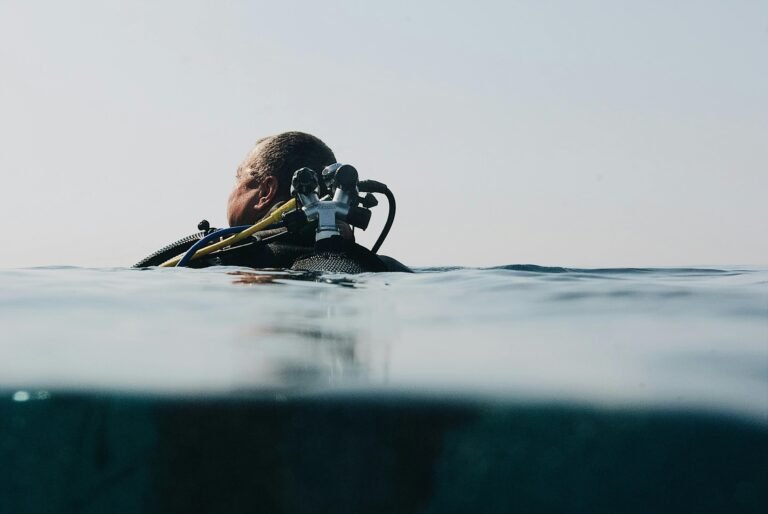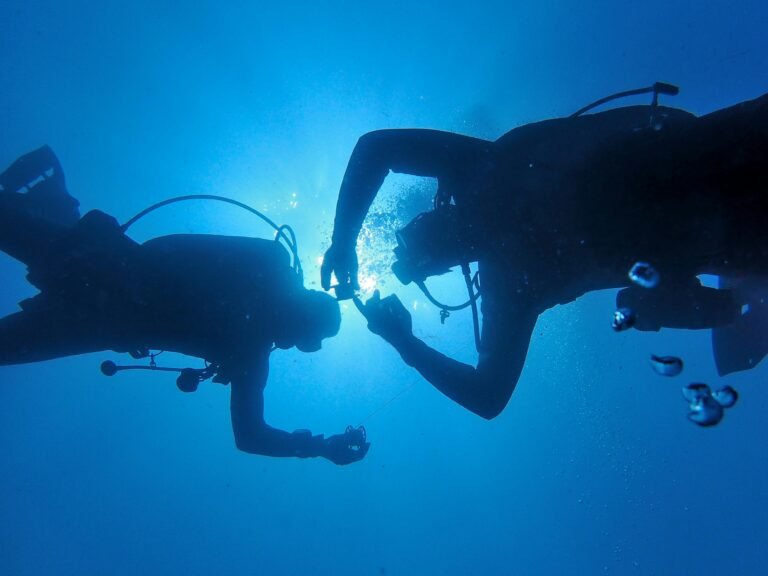Dive Computers for Beginners: The Best Options for Easy Use

Starting your scuba diving journey is exciting and full of possibilities. As a beginner, having the right gear is important to keep you safe and help you feel confident underwater. One of the most important tools you’ll need is a dive computer.
It keeps track of things like your depth, dive time, and safety stops, so you can stay safe and enjoy the experience.
There are many dive computers out there, but not all are beginner-friendly. Some are made specifically for new divers, with simple features and easy-to-read displays.
In this guide, I’ll help you find the best dive computers for beginners to make your dives safer and more fun.
Why Do Beginners Need a Dive Computer?
A dive computer is a key piece of safety equipment for scuba diving. For beginners, it helps simplify a lot of the things that can feel overwhelming at first.
Here’s why it’s so important:
Keeps You Safe
A dive computer tracks your depth, how long you’ve been underwater, and how much time you have left before you need to surface safely.
It does the math for you, ensuring you follow safe diving practices without needing to calculate everything manually.
Simplifies Dive Planning
Planning a dive involves figuring out how long you can stay underwater without risking decompression sickness.
A dive computer takes care of this by showing you real-time updates, so you don’t have to rely on dive tables or guesswork.
Builds Confidence
For beginners, scuba diving can feel a bit intimidating. A dive computer acts like a guide, giving you all the information you need at a glance. This makes diving more enjoyable and less stressful.
Beginner-Friendly Features
Some dive computers are designed with new divers in mind. They have features like:
- Easy-to-Read Displays: Large, clear screens that are easy to see underwater.
- Simple Menus: Straightforward controls, so you don’t get lost in complicated settings.
- Basic Alerts: Alarms and notifications to remind you about safety stops or limits.
In short, a dive computer is like having a personal dive assistant that helps you stay safe and focus on the fun parts of diving.
Key Features to Look for in Dive Computers for Beginners
When you’re picking a dive computer as a beginner, certain features can make a big difference. The best beginner-friendly models are designed to be simple, reliable, and easy to use.
Here are the key things to look for:
Ease of Use
For new divers, an intuitive design is a must. Look for dive computers with:
- Simple menus and navigation.
- Large, easy-to-press buttons (even with gloves on).
- Pre-programmed settings for common diving scenarios.
Durability
Your dive computer will face some tough conditions, from saltwater exposure to pressure changes. Choose a model that:
- Has a rugged, waterproof design.
- Can handle minor bumps and scratches.
- Is built to last through many dives.
Readable Display
Visibility is everything underwater, especially in low-light conditions. A good dive computer for beginners should have:
- A large, high-contrast screen.
- Backlighting for use in dark or murky water.
- Clear and simple graphics or text.
Budget-Friendly Options
As a beginner, you don’t need to splurge on top-of-the-line gear. There are plenty of affordable dive computers that still offer excellent quality. Set a budget and look for models that:
- Balance cost with essential features.
- Are known for reliability without unnecessary extras.
Upgradeable Features
While starting simple is a good idea, it’s also worth considering dive computers that can grow with you. Features like Nitrox compatibility or data sharing via Bluetooth can be useful as you gain experience.
By focusing on these features, you’ll find a dive computer that fits your needs and makes your diving experience safer and easier.
The Best Dive Computers for Beginners
With so many options on the market, it can be tricky to know where to start. Below are some of the best dive computers for beginners, chosen for their ease of use, reliability, and value for money.
Product 1: Suunto Zoop Novo

Key Features:
- User-friendly interface with large, easy-to-press buttons.
- Tracks multiple types of dives, including Nitrox.
- Durable design for long-term use.
Why It’s Great for Beginners
The Suunto Zoop Novo is one of the most popular entry-level dive computers. It’s straightforward to use, with a clear display and simple navigation buttons. Beginners will appreciate its large screen and bright backlight, which make it easy to read underwater.
Price Range
Around $300–$350.
Product 2: Cressi Leonardo

Key Features:
- Single-button operation for hassle-free setup.
- Large digits and backlighting for clear visibility.
- Audible alarms to help you stay within safe limits.
Why It’s Great for Beginners
The Cressi Leonardo is a budget-friendly option with all the essential features a beginner needs. It has a single-button interface, which makes navigation easy, and it’s built to last.
Price Range
Around $200–$250.
Product 3: Mares Puck Pro+

Key Features:
- Clear and easy-to-read display.
- Bluetooth connectivity for logging dives.
- Slim design that fits comfortably on your wrist.
Why It’s Great for Beginners
The Mares Puck Pro+ is perfect for those who want a simple and reliable dive computer at a great price. It’s lightweight, compact, and ideal for recreational divers.
Price Range
Around $200–$300.
Product 4: Shearwater Peregrine

Key Features:
- Full-color screen with customizable layouts.
- Supports both air and Nitrox diving.
- Rechargeable battery with long-lasting performance.
Why It’s Great for Beginners
The Shearwater Peregrine is slightly more advanced but still beginner-friendly. Its colorful, high-resolution display is incredibly easy to read, and it comes with features that can grow with you as you become more experienced.
Price Range
Around $500–$650.
Each of these options offers something unique, so your choice will depend on your budget and preferences.
Tips for Choosing the Right Dive Computer
Choosing your first dive computer can feel overwhelming, but with a bit of guidance, it’s a straightforward process. Here are some tips to help you make the best choice:
1. Understand Your Diving Style
Think about the type of diving you plan to do. Are you a recreational diver exploring coral reefs, or do you plan to try more advanced dives like Nitrox or deep diving?
For beginners sticking to recreational diving, a basic model with standard features will usually suffice.
2. Set a Budget
As a beginner, it’s wise to invest in a reliable dive computer without overspending on features you may not use.
Look for affordable options, typically in the $200–$400 range, that provide essential safety functions like depth tracking, safety stop reminders, and clear displays.
3. Research User Reviews
Online reviews can be a goldmine of information. Look for feedback from other beginners to understand how easy the computer is to use.
Reviews can also highlight any issues or limitations you might not find in product descriptions.
4. Try Before You Buy
Whenever possible, visit a local dive shop to try out different models. Testing a dive computer in person lets you see how it fits on your wrist and how easy the screen is to read.
Some dive shops even offer rentals, giving you a chance to test one during a dive before committing to a purchase.
5. Prioritize Ease of Use
As a new diver, you want a computer that simplifies your experience. Features like single-button operation, large fonts, and audible alarms will make your dives safer and less stressful. Avoid overly complex models with features you won’t need right away.
By following these tips, you can find a dive computer that matches your needs and budget, helping you dive with confidence from day one.
Conclusion
A dive computer is one of the most important tools you’ll invest in as a beginner scuba diver. It helps keep you safe by tracking essential dive data, simplifies dive planning, and allows you to focus on enjoying the underwater experience. The right dive computer will not only fit your budget but also offer features that match your needs as a new diver.
Whether you choose a simple, affordable option like the Cressi Leonardo or a more advanced model like the Shearwater Peregrine, the key is to find a computer that’s easy to use and reliable. As your diving skills grow, your dive computer can grow with you, offering advanced features for more complex dives.
Ready to find the perfect dive computer? Check out our recommended options and visit trusted retailers to compare prices and features. Don’t wait—invest in a dive computer today and make your dives safer, easier, and more enjoyable.
FAQs About Dive Computers for Beginners
Affiliate Disclosure
This article may contains affiliate links. If you make a purchase, I may earn a small commission at no extra cost to you. Thank you for your support!






